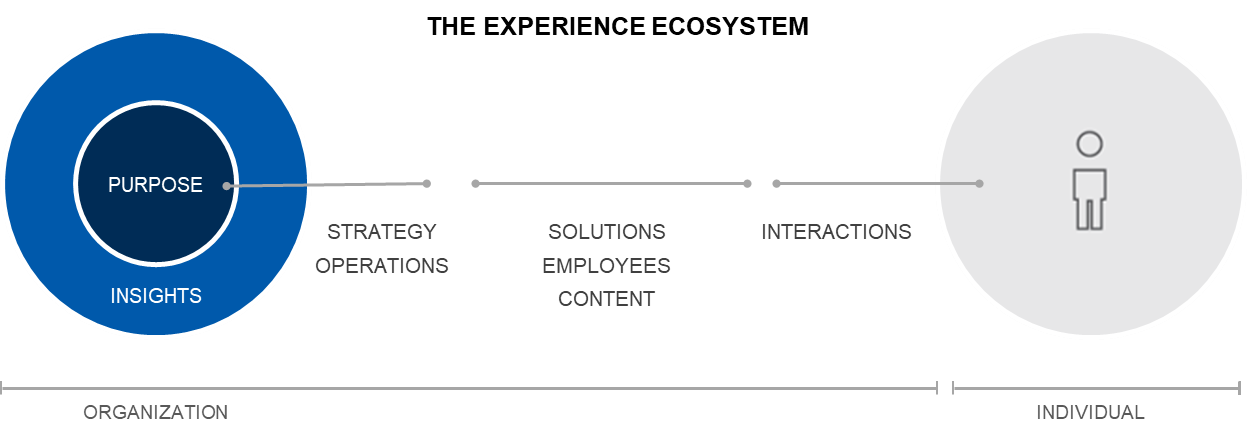Last week’s 2019 CXPA Insights Exchange in Salt Lake City represented everything that fuels my passion around the practice of customer experience and this year’s theme of “Moving Mountains” hit close to home as I reflect on my own experiences helping clients achieve their CX goals. As I listened to CX leaders and practitioners share stories of triumphs, challenges, and lessons learned, the grit of what it really takes to develop and deliver a compelling customer experience was apparent. To that end, I’d like to share a few of my most meaningful take-aways in hopes that they help you shift the momentum and move mountains within your own organizations:
Alignment is Half the Strategic Battle
Customer Experience cannot be a self-contained practice. It must feed and be fed by multiple functions across the organization. Experience-based differentiation requires an aligned - and orchestrated - ecosystem.

Often, organizations don’t fully understand the depths to which the customer experience must be supported by core operations from talent acquisition and training to sourcing and supply chain to sales and marketing. CX is – at its heart - a team sport. My advice to you: Be a connector of people and functions: build bridges not walls, be inclusive not exclusive, and find opportunities to build political capital across the organization by helping your peers and leaders outside of CX make progress against their charges – even if they are not directly your own.
CX Must Speak the Language of the Organization as well as the Customer
While most organizations still believe in the intrinsic value of CX, many efforts stall because leaders can’t clearly show how these efforts create credible value. Co-creating a common definition of value is the first step in this process, and unfortunately, it is also the most often skipped. How CX leaders and practitioners talk about the value of CX must be deeply rooted in their organization’s strategic imperatives while also balancing the need to meet customer needs and expectations. If you’re struggling to get started, I would encourage you to take a moment and look at our recent perspective on Experience Economics. My advice to you: In CX, the most concrete business cases are often built initially on near-term reduction in cost to serve: fewer calls, escalations, product returns, technician visits, etc. These remove both customer pain points and costs from the system and can free spend for medium-and- longer-term initiatives whose benefits are farther removed.
Numbers Alone Don’t Move Mountains
Yes, to have a seat at the strategic table, CX must make a clear and tangible connection to financial outcomes. The fact that every breakout session on the topic of CX Value was standing room only shows how many of our minds are consumed by making this connection. However, most of us have never been inspired to action by the numbers on a spreadsheet (if you have… I tip my hat and beg your pardon). The art of storytelling, of building emotional connection to the experiences of our customers, more often gives us a compelling reason to act. Cognitive psychologist Jerome Bruner suggests we are 22 times more likely to remember a fact when it has been wrapped in a story. The challenge to CX leaders and practitioners is how to blend stories and numbers, thereby satisfying both right and left brain thinking. My advice to you: Use the hard numbers to help support your stories and paint pictures of the opportunity – be creative with the data and insights you have and focus on the outcomes of decisions.
We are at an exciting precipice with CX. According to 2019 North Highland Beacon research, CX is a top three strategic imperative among executive respondents. How we rise to the challenge of building organizational assets, tools, and competencies will determine whether we earn a continuing seat at the table or diminish into a supporting player.